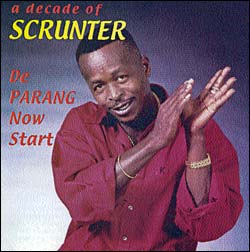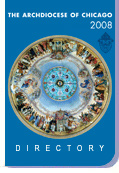|
|
Sounds of Trinidad
By Michael D. Wamble
STAFF WRITER
It’s Christmastime but there are no signs of bundled, rosy-cheeked
carolers trudging through the snow in Port-of-Spain, Trinidad.
 |
|
| Musical creations like parang are nothing new in Trinidad. The
country is responsible for this year’s ubiquitous sports refrain
and Nickelodeon favorite, “Who Let the Dogs Out?” The song performed
by a Trinidad artist—not The Baha Men—served as the anthem for
the nation’s Carnival 2000.
|
|
Instead, walking down Frederick Street or any boulevard, one can’t
avoid the ping-ping of the pan played in steel band yards knocking
out traditional (European and American) songs.
And, even more difficult to ignore would be the unique sounds
of parang.
What is parang?
Parang is music, but in a sense its story serves as a microcosm
of how differing cultures and ethnic experiences take new forms
throughout the nation of the islands of Trinidad and Tobago in
the eastern region of the Caribbean. These new creations range
from foods to the festive melodies sung prior to and on Dec. 25,
when Christ’s birth is celebrated worldwide.
Parang shares its origin with that of the island’s early encounter
with the Catholic explorer, Christopher Columbus, who named the
land in honor of the Trinity.
Sung in “broken Spanish,” the music championed a distinctively
religious perspective of Christmas. As the music has developed,
many contemporary songs have been penned in English.
While exclusively a form of Christmas music, parang is enjoyed
by peoples of varying religions and theological traditions. Some
of the brightest lights and largest Nativity scenes displayed
along the major highways are found in Hindu neighborhoods.
Like Chicago, Trinidad prides itself on the success Catholic representatives
have made in terms of inter-religious dialogue.
Port-of-Spain Diocesan Administrator Father Christian Pereira
has worked to keep lines of communication open between the archdiocese
and members of Hindu, Muslim and Orisha traditions, as well as
those of other Christian faiths. To further these efforts, Pereira
has spoken in numerous places of worship about the Catholic faith.
Representatives of other traditions attend Catholic churches to
explain their religions.
But at this time of year, what can be heard in churches like St.
Patrick in Port-of-Spain, are the sounds of Christmas familiar
even to a U.S. ear, with one notable exception: the steel pan.
The pan, a steel drum manipulated to produce musical notes, was
born in Trinidad and accompanies many choirs, including the Saturday
evening children’s choir at St. Patrick.
Whether the sound is authentic parang or a steel pan reworking
of “The Little Drummer Boy,” Trinidad and Tobago have embraced
Christmas by creating music in the key of Caribbean life.
Wamble participated in UCIP University 2000, an international
program for Catholic journalists and members of the Catholic press
to study abroad. Journalists spent three weeks in three different
Caribbean countries: Trinidad and Tobago, Guyana and St. Lucia.
Articles celebrating the church in the Caribbean will appear in
The Catholic New World in early 2001.
Front Page | Digest | Cardinal | Interview
Classifieds | About Us | Write Us | Subscribe | Advertise
Archive | Catholic Sites | New World Publications | Católico | Directory | Site Map
|
|





